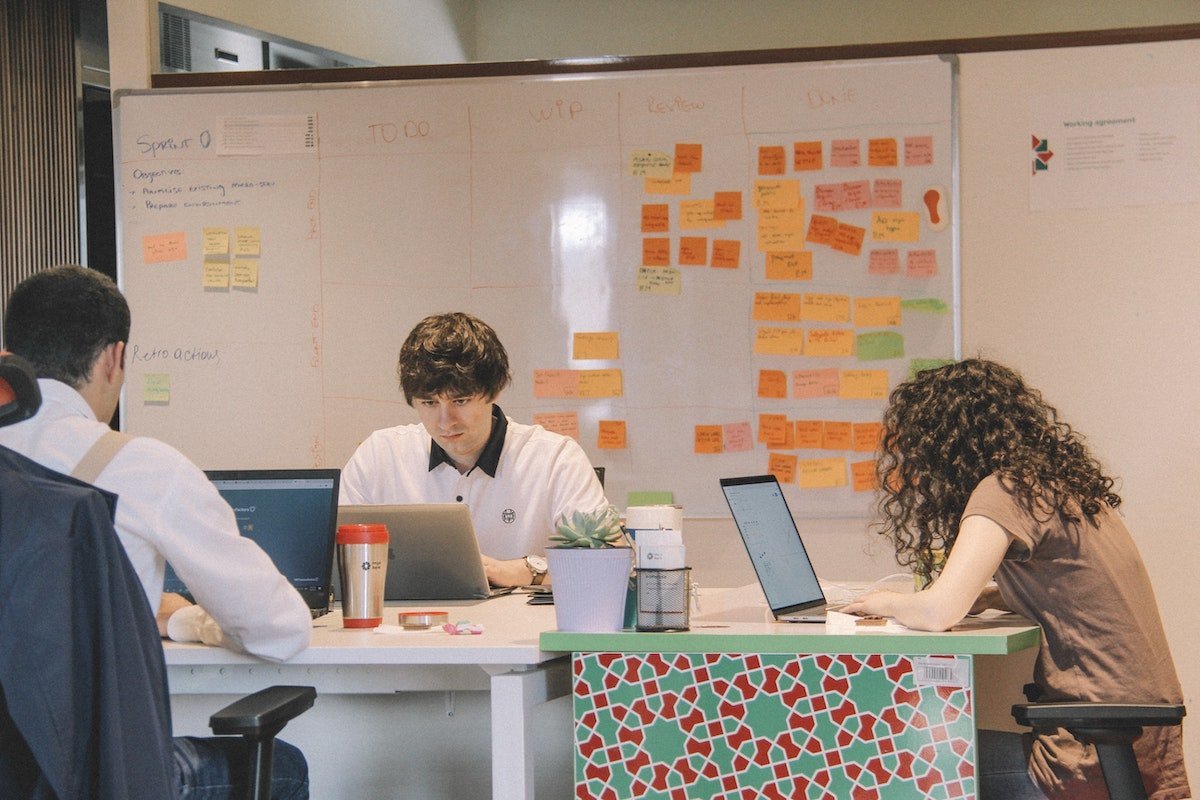In today’s fast-paced business environment, organisations need to be agile, flexible, and responsive to change. Agile and Lean methodologies have emerged as popular frameworks that help teams work collaboratively, deliver products faster, and continuously improve processes.
Agile and Lean share many similarities, including a focus on customer needs, iterative development, and continuous improvement. However, there are also significant differences between the two, and choosing the right framework for your team can make a significant impact on project success.
In this article, we will explore the key differences between Agile and Lean methodologies and help you choose the right framework for your team.
Agile Methodology
Agile is a flexible and adaptive approach to software development that emphasises collaboration, customer satisfaction, and continuous improvement. The Agile Manifesto, created in 2001, outlines 12 principles that guide Agile development:
- Customer satisfaction through early and continuous delivery of valuable software
- Welcome changing requirements, even late in the project
- Deliver working software frequently, with a preference for shorter timescales
- Collaboration between business stakeholders and developers
- Build projects around motivated individuals and give them the support and trust they need
- Use face-to-face communication as much as possible
- Working software is the primary measure of progress
- Maintain a sustainable pace of work for the team
- Focus on technical excellence and good design
- Simplicity is essential
- Self-organising teams are the most effective
- Reflect regularly on the team’s performance and adjust accordingly
Agile development is characterised by short development cycles, called sprints, that typically last between one and four weeks. Each sprint begins with a planning meeting, where the team defines the work to be done and estimates the time required. The team then works on the sprint backlog, a prioritised list of tasks, and delivers a working product at the end of the sprint. The sprint ends with a review and retrospective, where the team reflects on what went well, what could be improved, and adjusts their approach accordingly.
Advantages of Agile
- Flexibility: Agile development is highly adaptable to changing requirements and customer needs, making it an ideal approach for projects with a high degree of uncertainty.
- Collaboration: Agile emphasises collaboration between team members and stakeholders, promoting a sense of ownership and shared responsibility for project success.
- Speed: Agile development is designed to deliver working software quickly, with frequent releases and short development cycles.
- Quality: By emphasising technical excellence, Agile development can lead to higher quality software that is easier to maintain and scale.
- Transparency: Agile development is highly transparent, with daily stand-up meetings, frequent demonstrations, and progress reports.
Disadvantages of Agile
- Learning Curve: Agile development requires a significant shift in mindset and culture, which can be challenging for teams accustomed to traditional waterfall approaches.
- Overemphasis on documentation: Agile development is often associated with minimal documentation, which can lead to confusion and misunderstandings.
- Scope creep: Agile development is highly adaptable, which can make it challenging to manage project scope and prevent feature creep.
- Continuous collaboration: Agile teams require a high level of collaboration and communication, which can be challenging for remote or distributed teams.
Lean Methodology
Lean methodology is a process improvement approach that originated in manufacturing but has since been adopted in many other industries, including software development. Lean principles focus on reducing waste, increasing efficiency, and delivering value to customers.
The five core principles of Lean are:
- Define value: This principle focuses on identifying what the customer values and ensuring that the product or service delivers that value.
- Map the value stream: This principle involves identifying all the activities involved in delivering the product or service and mapping them to identify waste, inefficiencies, and opportunities for improvement.
- Create flow: This principle emphasises the importance of smooth, continuous flow in the value stream, eliminating bottlenecks and delays.
- Establish pull: This principle involves designing the process so that the customer pulls the product or service when they need it, rather than pushing it through the process based on a predetermined schedule.
- Seek perfection: This principle involves continuously striving for improvement, eliminating waste, and delivering maximum value to the customer.
Lean methodology is characterised by a focus on continuous improvement, waste reduction, and a customer-centric approach to product development. Lean development typically involves creating a minimum viable product (MVP) and then iterating based on customer feedback, rather than building a complete product upfront.
Advantages of Lean
- Focus on Customer Value: Lean methodology emphasises identifying and delivering customer value, which can help ensure that the final product meets customer needs and expectations.
- Waste Reduction: Lean methodology seeks to eliminate waste in the value stream, which can lead to more efficient and cost-effective processes.
- Continuous Improvement: Lean methodology involves ongoing improvement and optimization of processes, which can lead to better quality products and services.
- Speed: Lean development emphasises delivering value quickly, often through the use of MVPs and iterative development cycles.
Disadvantages of Lean
- Limited Documentation: Lean methodology often prioritises action over documentation, which can make it challenging to maintain a clear record of processes and decisions.
- Limited Predictability: Because Lean development involves continuous improvement and iteration, it can be challenging to predict timelines and final outcomes.
- Dependency on Customer Feedback: Lean development relies heavily on customer feedback to guide the development process, which can be challenging if customers are not engaged or available.
- Limited Scope: Lean development typically focuses on delivering a minimum viable product, which may not include all the features or capabilities that customers need or expect.
Choosing the Right Framework:
When choosing between Agile and Lean methodologies, it’s essential to consider your team’s needs and the nature of the project. Both methodologies can be effective, but they are designed for different contexts and require different skillsets and mindsets.
Agile may be the right choice if your project has a high degree of uncertainty or requires a high level of collaboration between team members and stakeholders. Agile is also a good choice if you need to deliver working software quickly and continuously improve your processes.
Lean may be the right choice if your project requires a focus on efficiency and waste reduction or involves delivering a minimum viable product and iterating based on customer feedback. Lean is also a good choice if you need to optimise a value stream and continuously improve your processes.
Ultimately, the choice between Agile and Lean methodologies will depend on your team’s skills and experience, the nature of the project, and your organisation’s culture and goals. By understanding the key differences between Agile and Lean and evaluating your team’s needs, you can make an informed decision and choose the framework that will help you achieve your project goals.


